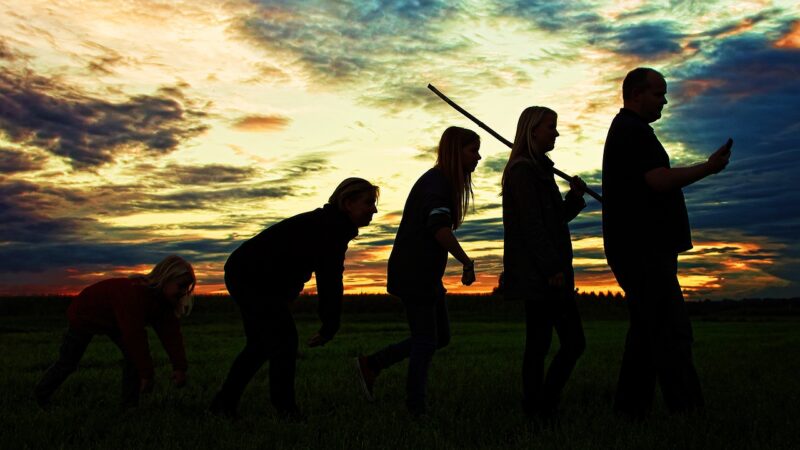From Silent Films to Streaming Giants: The Evolution of Movies
November 18, 2024

The world of cinema is one of perpetual transformation. It began in the late 19th century with silent films, where stories unfolded in black and white with no dialogue, relying solely on visual storytelling, music, and the expression of actors. As technology and societal norms evolved, so did the way filmmakers engaged audiences. This article delves into the evolution of movies, highlighting significant milestones from silent films to the current era of streaming giants.
**1. The Dawn of Silents**
The year 1895 marked a pivotal moment in entertainment history with the invention of the Cinematographe by the Lumière brothers. The first public screening of films featured short clips of everyday life, captivating audiences with moving images for the very first time. Silent films relied heavily on physical acting and title cards to convey dialogue and context. Classic silent film stars include Charlie Chaplin, Buster Keaton, and Greta Garbo, whose performances transcended language barriers and established a foundational appreciation for the art of film.
Silent films were often accompanied by live orchestras or pianists, enhancing the emotional impact of the narratives. Movies like *The Birth of a Nation* (1915) and *The Jazz Singer* (1927) are examples that shaped public perceptions and laid the groundwork for cinematic storytelling, despite the controversial and racist themes presented in the former.
**2. The Advent of Sound**
The late 1920s ushered in an era that would redefine the cinematic experience: the introduction of synchronized sound. *The Jazz Singer*, widely acknowledged as the first “talkie,” showcased how sound could enhance narrative depth and character development. The transition to sound was not without challenges; many silent film actors struggled to adapt, leading to an industry-wide shift.
Innovative sound design became essential, allowing filmmakers to weave intricate soundscapes, from background music to dialogue delivery. The sound era marked the rise of new genres, including musicals, which became immensely popular during this time. Movies like *Singin’ in the Rain* (1952) celebrated the transformation and challenged the industry to embrace new technology while paying homage to the silent film era.
**3. Technicolor and the Golden Age of Hollywood**
The 1930s saw the introduction of color films, with *Becky Sharp* (1935) being the first feature-length film to use the three-color Technicolor process. The vibrancy of color brought new life to cinema, enticing audiences with visually captivating stories. During this period, Hollywood emerged as the powerhouse of filmmaking, characterized by studio systems, glamorous stars, and iconic films such as *Gone with the Wind* (1939) and *The Wizard of Oz* (1939).
These films revolutionized how stories were told. The lavish settings, engaging narratives, and expansive budgets allowed filmmakers to create enchanting worlds that linger in collective memory. The influence of film noir, musicals, and epics during this era can’t be overstated, as they generated excitement and shaped public opinion.
**4. The Rise of Television**
During the 1950s, another disruptive technology emerged: television. As people began to choose the comfort of their homes for entertainment, cinema experienced a decline in attendance. To compete, filmmakers had to innovate. This led to the introduction of widescreen formats like CinemaScope and 3D films to provide audiences with a unique viewing experience that couldn’t be replicated on television.
*Ben-Hur* (1959) and *The Ten Commandments* (1956) are prime examples of how filmmakers used these new formats to draw audiences back to theaters. The 1960s and 70s brought a new wave of filmmaking; directors like Alfred Hitchcock and Martin Scorsese began to challenge conventional storytelling and explore personal narratives, often reflecting societal issues.
**5. Blockbusters and New Hollywood**
The late 1970s heralded the dawn of the modern blockbuster with films like *Jaws* (1975) and *Star Wars* (1977). These movies not only showcased special effects but also introduced the concept of the summer blockbuster, fundamentally changing the industry’s economic landscape. Studios realized the monetary potential of high-budget films marketed to mass audiences.
The New Hollywood movement, characterized by innovative directors exercising creative freedom, emerged during this time. Filmmakers like Steven Spielberg, George Lucas, and Francis Ford Coppola drew from personal experiences, creating iconic narratives that resonated with audiences, such as *Apocalypse Now* (1979), which addressed themes of war and moral ambiguity.
**6. The Digital Revolution**
The 1990s and early 2000s marked a turning point with the advent of digital technology. Filmmakers began to explore CGI (computer-generated imagery), broadening creative possibilities beyond practical effects. Movies like *Jurassic Park* (1993) showcased groundbreaking visual effects, establishing a new paradigm in storytelling.
Digital filmmaking made the medium more accessible, allowing independent creators to produce films with lower costs. The democratization of filmmaking led to a surge of creativity, with diverse voices and narratives breaking into the mainstream. Streaming services like YouTube provided platforms for emerging filmmakers to showcase their talent, creating a new path for storytelling.
**7. The Streaming Revolution**
Today, we find ourselves in the age of streaming giants like Netflix, Amazon Prime, and Disney+. The way we consume movies has irrevocably changed, allowing viewers unprecedented access to vast libraries of films. The streaming model has disrupted traditional distribution methods, challenging theaters to adapt or innovate.
The global pandemic accelerated this transformation, forcing studios to release films directly onto streaming platforms. This period sparked conversations about the future of cinema, as viewers debate the cultural significance of the theater experience versus the convenience of home viewing.
Streaming has also provided a platform for diverse voices and stories that may have struggled to find a place in traditional Hollywood. Films like *Parasite* (2019) have, thanks to streaming, reached broader audiences and gained critical acclaim, reshaping industry standards.
**Conclusion**
The evolution of movies from silent films to streaming giants encapsulates the broader shifts in technology, culture, and society. Each era has brought innovations that have shaped not only how films are made but how they are consumed and appreciated. As we navigate the streaming landscape, the future of cinema will undoubtedly continue to evolve, blending traditional storytelling with groundbreaking technology.
In this dynamic environment, filmmakers will keep challenging conventions and telling stories in innovative ways, ensuring that the evolution of movies remains an enthralling journey for generations to come.








